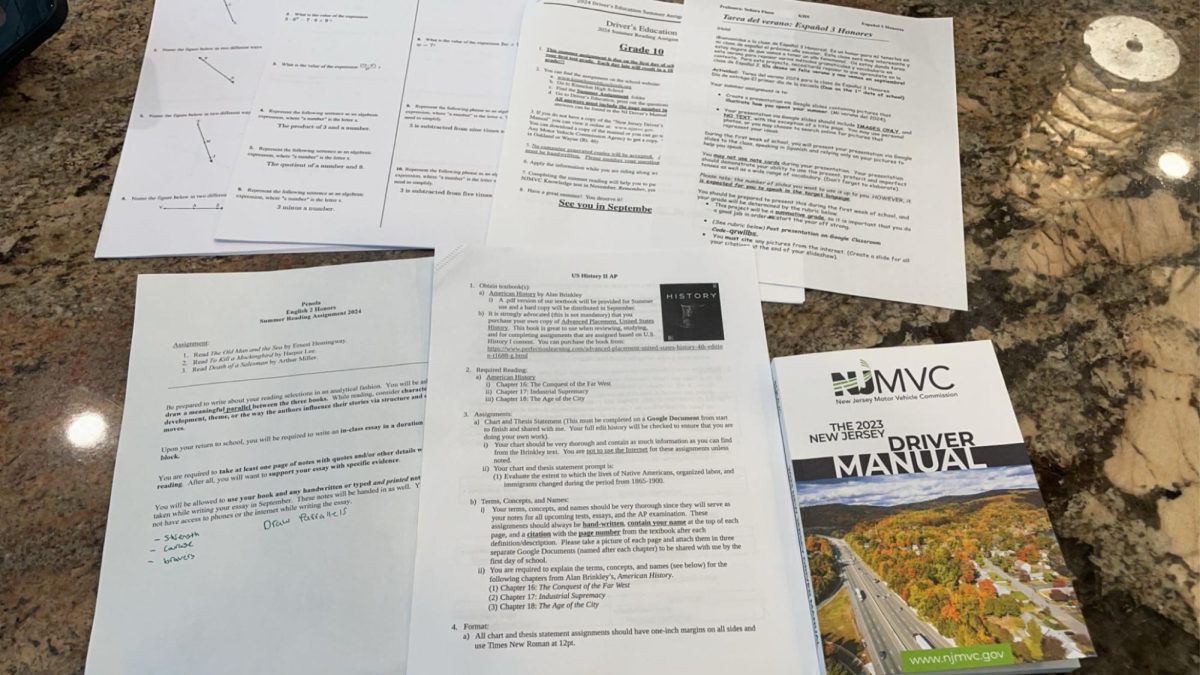Thousands of United States citizens and animals are falling seriously ill, all from water that looks like pea soup. The water’s green hue is the effect of harmful algal blooms, which are becoming more common in large bodies of water in the U.S. Harmful algal blooms (HABs) are caused by an excess of nutrients, like phosphorus, that come from fertilizers and other human activities. Out-of-control algae blooms can produce toxins that are dangerous to animals and humans.
Junior Katherine Fritz, a student at Kinnelon High School, is undertaking research to combat these harmful algae blooms. Fritz recently competed in the Terra North Jersey STEM Fair at Kean University. Fritz entered the Chemistry category with her research on phosphorus extraction from wastewater, entitled “Optimizing Sustainable Phosphorus Removal: Evaluating the Effectiveness of Magnesium Salt Reagents in Synthetic Wastewater.”
Phosphorus is a crucial, limited resource for agriculture, but its mining harms the environment and is costly. Phosphorus is also found in wastewater, which is runoff water and sewage from human activities like showering. Excess phosphorus can lead to harmful algae blooms when wastewater is returned to the environment. Fritz experimented with using magnesium salts as a cost-effective and environmentally friendly way to remove excess phosphorus from wastewater. Her research aimed to rely less on phosphate mining and improve wastewater treatment processes.
Fritz developed her project through the KHS Science Research Program, which is a three-year course. Now in her second year, she continues to build on the foundation she laid as a freshman. According to Science Research teacher Hope Kowalski, the first year of the course is used to find a specific scientific topic of interest. At the end of the first year, students reach out to mentors outside of school and begin their research..
“I liked environmental science, and I started reaching out to journal article authors. My mentor was currently studying this field, so we did [research] similar to what she had already done,” said Fritz.
Fritz faced several challenges along the way. Kowalski noted that setting up meetings with mentors and trying to match schedules requires a lot of independent responsibility. Additionally, Fritz needed to analyze experimental results, write a paper, and make a poster, which only added to her workload.
Despite the difficulties, Fritz found success. Students in the Authentic Science Research program enter their research into three competitions during the school year. Fritz competed in the Chemistry category at the Terra North Jersey STEM Fair, winning an award from the Water Environment Federation.
“[The fair] was a lot of fun, but I was nervous because there were so many people there,” said Fritz.
By winning this award, she was nominated for the U.S. Stockholm Junior Water Prize competition. This state-level competition is specifically for student projects that can solve major water problems. Winners of the Stockholm competition can earn the U.S. Stockholm Junior Water Prize, which is the world’s most prestigious award presented to a high school student for a water-research project.
These competitions are only the beginning of Fritz’s path in science. She plans to continue with science in college, with a focus on sustainability. She also recommends the KHS research program to any students interested in research.
“You learn how to write authentic science research, and it’s one-on-one with Mrs. Kowalski, so it’s very helpful,” said Fritz.








